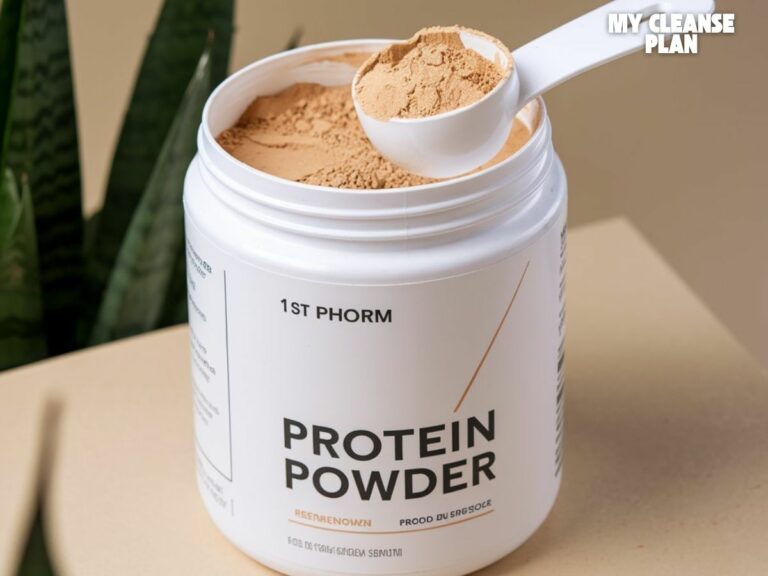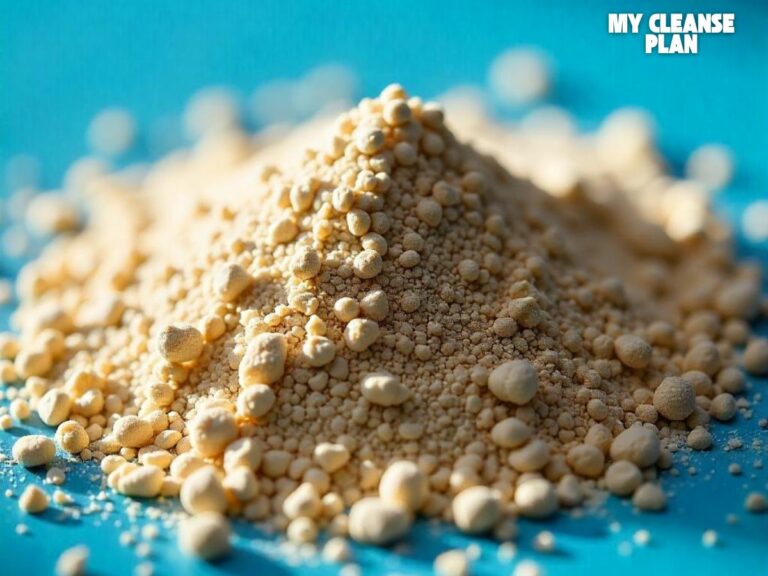What Causes Protein Buildup on Contacts? Expert Advice for Clear Vision
Have you ever woken up and felt like your contact lenses were blurry, even though you just put them in? Or simply you want to know what causes protein buildup on contacts?
You’re not alone! Protein buildup is a common issue for contact lens wearers, and it can seriously impact your vision.
But don’t worry, it’s not the end of the world! We’re going to dive into the nitty-gritty of protein buildup, explore its causes, and arm you with expert advice to keep your contacts clean and your vision crystal clear.

Key Takeaways
Expert Guide
What is Protein Buildup in Eyes?
Our eyes naturally produce proteins, lipids, and other substances to keep them healthy and functioning properly.
When you put in your contact lenses, these substances can get trapped on the surface of the lenses, leading to a buildup over time.
The main cause of protein buildup on contact lenses is none other than your own tears.
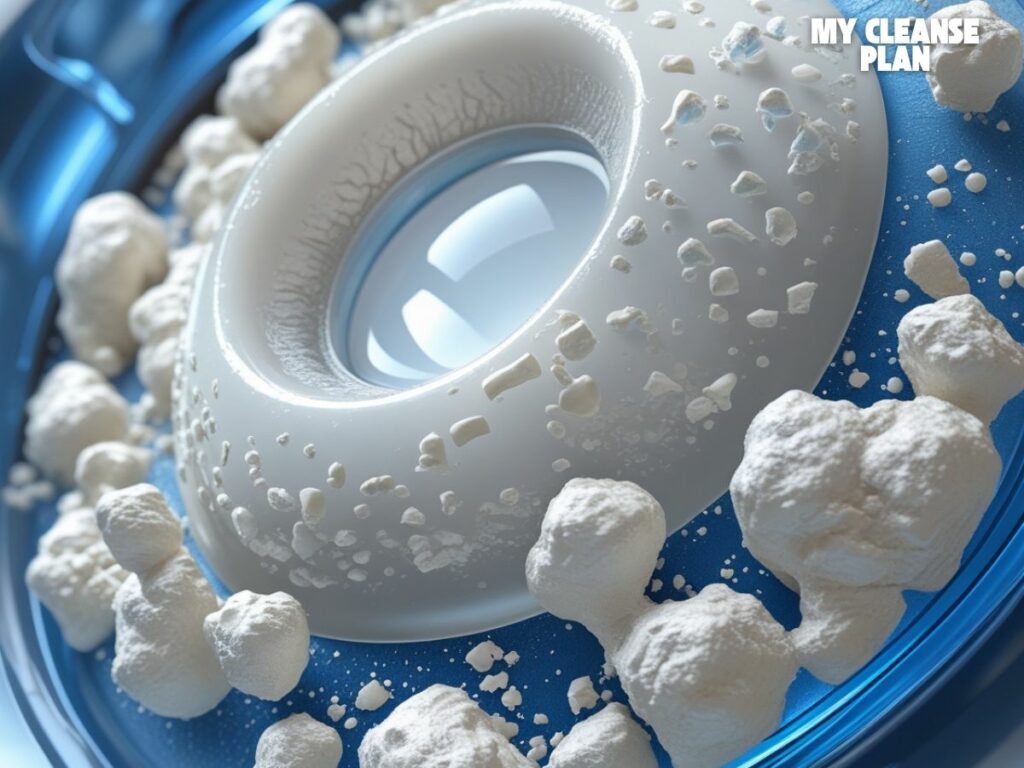
Some key tear components that contribute to protein deposits include:
- Lysozyme – An enzyme that helps fight off bacteria
- Lipocalin – A protein that binds to lipids
- Lactoferrin – An antimicrobial protein
- Immunoglobulins – Antibody proteins
These substances are all-natural and necessary for eye health, but over time they can stick to the surface of your contacts, creating that cloudy, hazy effect.
Factors That Contribute to Protein Buildup
So, what causes protein buildup on contacts? While some protein buildup is normal, certain factors can turn it from a minor inconvenience into a major headache.
Let’s break down the usual suspects:
1. Your Tear Film Composition
The makeup of your tear film, which includes proteins, lipids, and other substances, can play a big role in how much buildup you experience.
Some people naturally produce more of these substances, leading to more rapid accumulation on their contacts.
2. Lens Material
The type of contact lens material you wear can also affect protein buildup. Certain materials, like silicone hydrogel, tend to attract and hold onto proteins more than others.
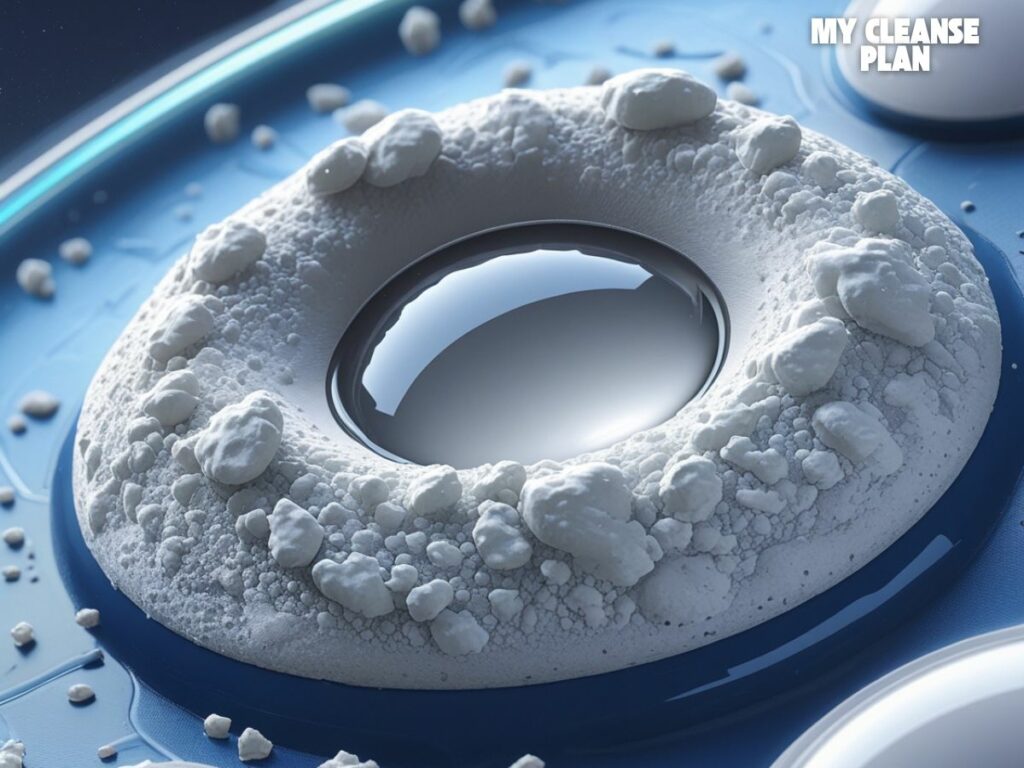
3. Wear Time
The longer you wear your contacts, the more time those proteins and other substances have to accumulate on the lens surface.
Extending your wear time beyond the recommended schedule can exacerbate the problem.
4. Improper Cleaning
If you don’t properly clean and disinfect your contacts, leftover debris and residue can contribute to protein buildup over time.
If you find that protein buildup is an ongoing issue for you, be sure to discuss it with your eye doctor.
They can help identify any underlying causes and recommend personalized strategies to keep your contacts clear.
Signs of Protein Buildup
Keep an eye out for these common signs of protein buildup:
- Blurry Vision: This is the most common symptom.
- Dry, Scratchy Eyes: Protein buildup can make your lenses feel uncomfortable.
- Increased Sensitivity to Light: The protein film on your lenses can make you more sensitive to light.
- Redness and Irritation: Protein buildup can irritate your eyes, leading to redness and discomfort.
- Discharge: You may notice a sticky, white discharge around your eyes.
If you experience any of these symptoms, it’s important to see your eye doctor to rule out any other eye conditions and get advice on how to manage protein buildup.
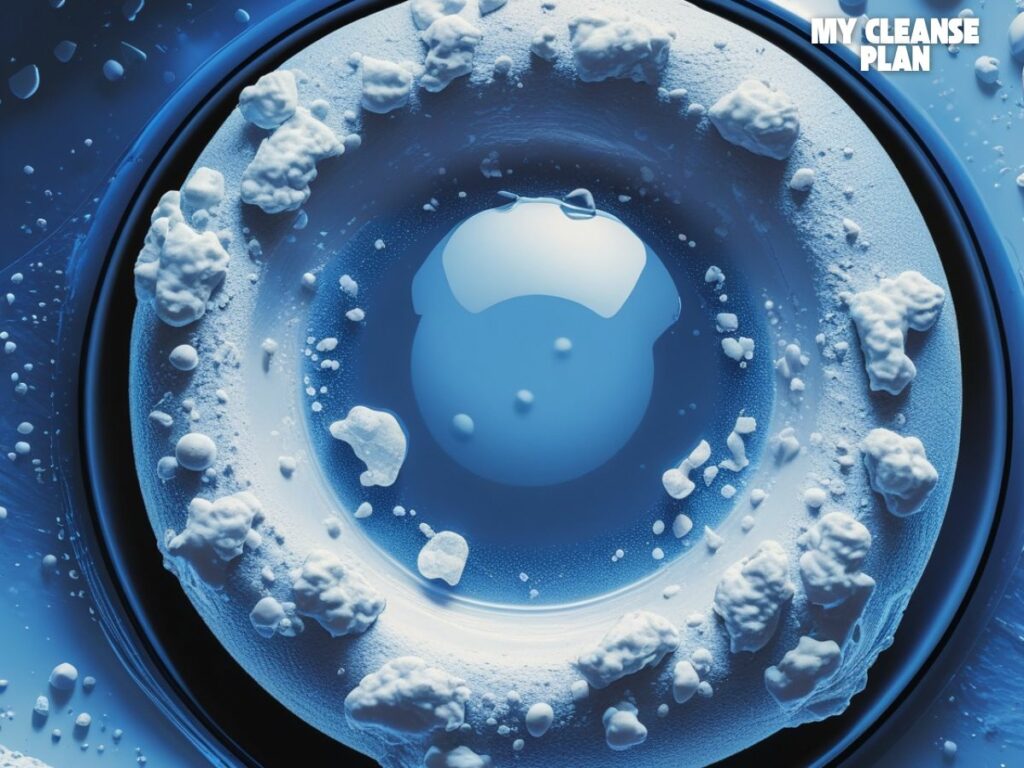
The Impact of Protein Buildup on Your Vision
When proteins accumulate on your contact lenses, it can significantly impact the quality of your vision in several ways:
- Blurred/distorted vision – The protein deposits act like a film on the lens, refracting light in an irregular way and causing blurriness or distortion.
- Decreased visual acuity – The buildup blocks light from passing through the lens clearly, reducing your sharpness of vision.
- Increased glare and halos – Protein deposits can magnify the effects of light, leading to excessive glare and distracting halos around bright lights.
- Eye strain and fatigue – The constant struggle to see clearly through cloudy lenses can cause eye strain, headaches, and general visual fatigue.
Left unchecked, protein buildup can seriously compromise your ability to see the world around you with clarity and comfort. That’s why proper lens care is so crucial.
How Can I Prevent Protein Buildup?
In addition to the lens care best practices we covered earlier, here are some extra tips that can help minimize protein deposits on your contacts:
Blink frequently
Make an effort to blink more often while wearing contacts. This helps spread your tears evenly across the lens surface.
Use rewetting drops
Preservative-free rewetting drops can help flush away excess proteins and lipids throughout the day.
Consider silicone hydrogel lenses
These newer lens materials are less prone to protein buildup compared to traditional hydrogel lenses.
Avoid makeup and creams
Be extra diligent about removing all eye makeup, lotions, and creams before inserting your contacts.
Stay hydrated
Drinking plenty of water can help maintain healthy tear production and composition.
With the right lens care routine and a few simple lifestyle adjustments, you can take control of protein buildup and enjoy consistently clear, comfortable vision with your contacts.
When to See an Eye Care Professional
Sometimes, despite your best efforts, protein buildup can still cause issues. If you’re experiencing persistent discomfort, blurry vision, or other eye problems, it’s time to consult your eye care professional.
Explore Also:
Creativehouseblog
Dietsheriff
Gigasecurehome
They can check if your lenses are the right fit for you, suggest alternative cleaning products, or even recommend switching to a different type of lens.
Dealing with protein buildup on your contacts doesn’t have to be a constant battle. With the right knowledge and care routine, you can keep your lenses clean and your vision crystal clear. Remember, your eyes are precious – treat them with the care they deserve!
FAQs Of What Causes Protein Buildup on Contacts?
How can I remove protein buildup from my contact lenses?
If you have protein buildup on your contact lenses, you can use a contact lens solution that is designed to remove protein deposits. You can also use an enzymatic cleaner, which is a special type of cleaning solution that can help to break down protein deposits.
Can I use tap water to rinse my contact lenses?
No, you should never use tap water to rinse your contact lenses. Tap water can contain bacteria and other contaminants that can cause eye infections.
Can protein buildup on contacts cause eye infections?
Yes, protein deposits can trap bacteria and other debris on your lenses, increasing the risk of eye infections. Proper lens care is essential to minimize this risk.
What are the signs of a contact lens infection?
The signs of a contact lens infection can include redness, pain, blurred vision, discharge, and sensitivity to light. If you experience any of these symptoms, you should see your eye doctor immediately.


